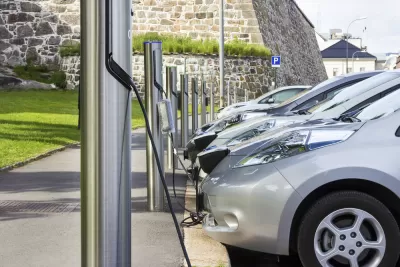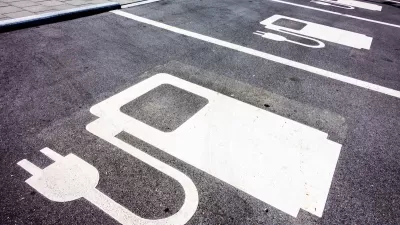Over a decade ago, automakers predicted that every new car would be a hybrid by 2020. Why were they so off the mark?

In 2008, an IBM report "asked 125 auto industry executives about their predictions for what cars would be like in 2020. The resulting report predicted every car by 2020 would be a hybrid," writes Aaron Gordon. Yet the actual numbers are nowhere close: only about three percent of new cars sold in 2020 were hybrids, an extremely modest increase from 2.4 percent at the time of the report. Automakers also wrongly predicted a trend toward smaller, more efficient vehicles. In fact, "as quickly as the economy recovered and gas prices fell, consumers returned to buying the biggest trucks and SUVs they could find." Meanwhile, hybrids became associated with Hollywood elites, decreasing their appeal for many ordinary Americans.
Dan Sperling, professor at University of California, Davis and founding director of the Institute for Transportation Studies, more accurately predicted the pace of hybrid and EV adoption. But Sperling thinks the current situation is different. According to Sperling, "the combination of reduced battery costs and future regulations both in the U.S. and abroad will ensure auto companies follow through" on new plans to boost EV production and sales. "Even if the federal government doesn't enact EV mandates, California will, Sperling said, and many states will likely follow. He predicted the needle won't move much before 2026, but after that, expect the market to take off."
FULL STORY: Experts Predicted All Cars Would Be Hybrid by 2020. Why Were They Wrong?

Alabama: Trump Terminates Settlements for Black Communities Harmed By Raw Sewage
Trump deemed the landmark civil rights agreement “illegal DEI and environmental justice policy.”

Planetizen Federal Action Tracker
A weekly monitor of how Trump’s orders and actions are impacting planners and planning in America.

Why Should We Subsidize Public Transportation?
Many public transit agencies face financial stress due to rising costs, declining fare revenue, and declining subsidies. Transit advocates must provide a strong business case for increasing public transit funding.

Understanding Road Diets
An explainer from Momentum highlights the advantages of reducing vehicle lanes in favor of more bike, transit, and pedestrian infrastructure.

New California Law Regulates Warehouse Pollution
A new law tightens building and emissions regulations for large distribution warehouses to mitigate air pollution and traffic in surrounding communities.

Phoenix Announces Opening Date for Light Rail Extension
The South Central extension will connect South Phoenix to downtown and other major hubs starting on June 7.
Urban Design for Planners 1: Software Tools
This six-course series explores essential urban design concepts using open source software and equips planners with the tools they need to participate fully in the urban design process.
Planning for Universal Design
Learn the tools for implementing Universal Design in planning regulations.
Caltrans
Smith Gee Studio
Institute for Housing and Urban Development Studies (IHS)
City of Grandview
Harvard GSD Executive Education
Toledo-Lucas County Plan Commissions
Salt Lake City
NYU Wagner Graduate School of Public Service





























